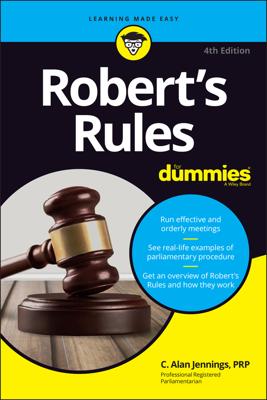At the foundation of every good meeting is a good meeting plan, or agenda. And Mr. Robert is the man with the plan. Robert's Rules provides your group with a standard order of business, which is simply a sequence for taking up each different class of business in order as follows:
-
Reading and approval of minutes.
Important things happened in your previous meeting. Before you do anything else, make sure that everyone agrees with the record of that meeting.
-
Reports of officers, boards, and standing committees.
Your leadership team should be working in the time between membership meetings, and you need to hear what they've been up to before you venture into making too many decisions.
-
Reports of special committees.
If your group has appointed any special committees for specific purposes, you need their info, too. But these committees wait their turn and report after the standing committees make their reports.
-
Special orders.
Sometimes you need to schedule particular items of business before going over the things postponed from a previous meeting. And sometimes the bylaws require something to be done at a particular meeting, like a "nominations in November" rule in your bylaws. Such items of business and bylaw requirements qualify as special orders.
-
Unfinished business and general orders.
Before you do anything else, you need to finish up what you already started. This is the time to get back to the postponed motions and any business that was pending when your previous meeting adjourned.
-
New business
If time permits, you can broach the subject of new business. You've done the wise thing by waiting until you've taken a shot at all the other stuff. It's sort of like how you have to clean your plate before you get dessert.
If you've adopted Robert's Rules, much of your meeting planning has been done for you. This order of business framework is really all you need to develop your meeting agenda. All you have to do to make the best use of your meeting time is plug your specifics into the program and go!
The term order of business refers not only to the complete sequence of the classes of business within the order of business, but also to any individual class of business. In other words, when referring to a single class of business within the order of business, the single class can also be referred to as an order of business.

